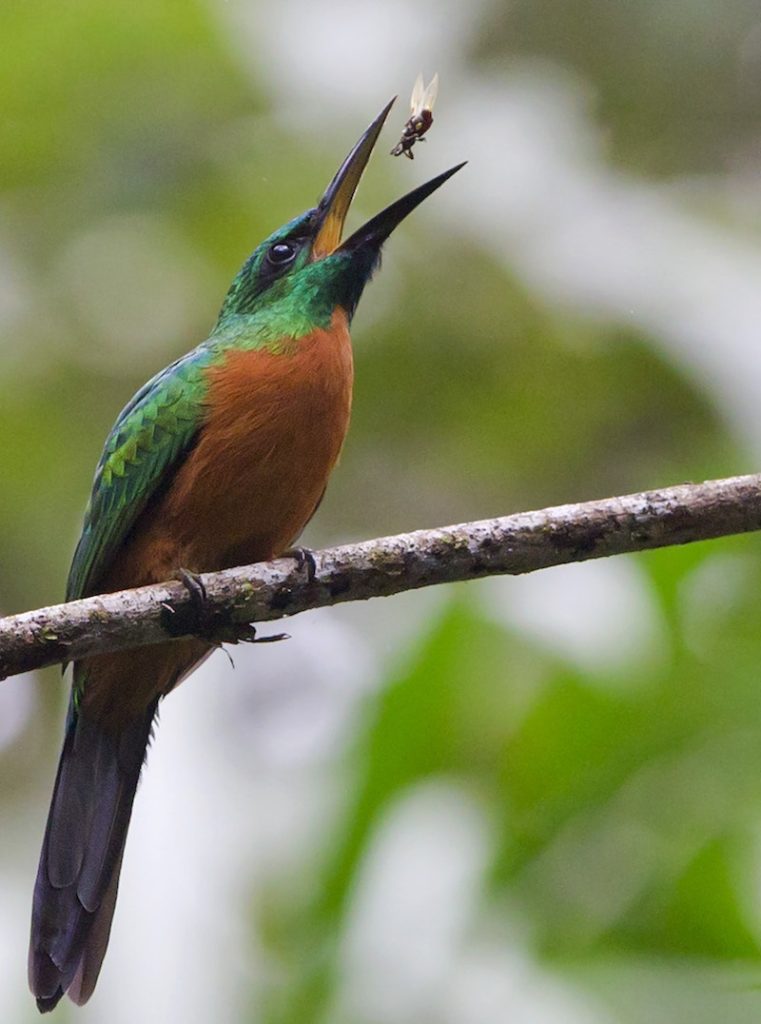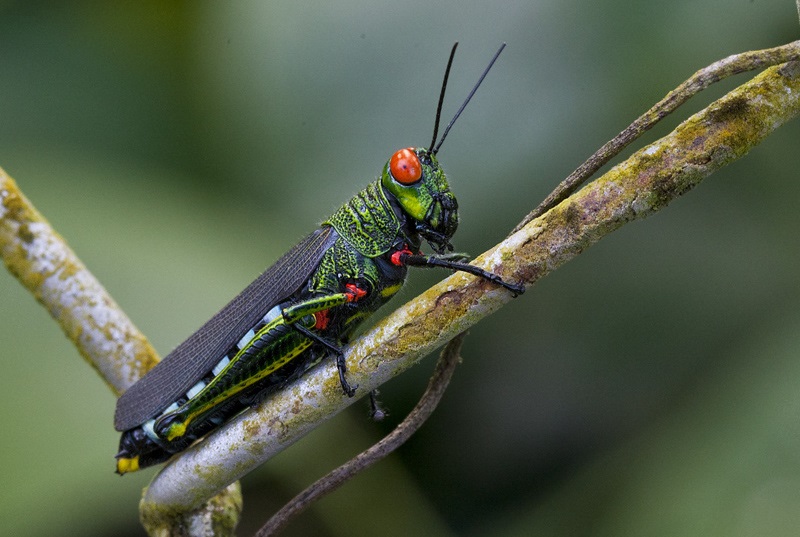Wildlife watching in Panama is hot stuff… its one of the hottest places in Central America to go birding and can offer some wonderful mammals, reptiles, amphibians and insects too!
Panama is a tropical rain forest with a huge flora and fauna including a surprisingly long bird list of nearly 950 species for you to see! Panama’s biodiversity is staggering – the country is home to 218 mammal species, 226 species of reptile, 164 amphibian species and 125 animal species found nowhere else in the world too. Mammals include manatee, anteaters, many monkeys including howlers and several tamarin species. It has a plethora of rodents including the ubiquitous agoutis, seemingly below every bird feeder! Bats abound and if its large predators you are after there is the chance of puma, ocelot and jaguar or even spectacled bear if you are very lucky. Tapir can be seen too and a couple of species of sloth, the list goes on and on.

There are specialist (bilingual) guides and comfortable lodges all very short distances from bird watching sites – just what a birder loves, besides the terrific hospitality, good accommodation and typically tasty Panamanian cuisine. Birding abounds both in the National Parks and in many other localities. A few of the best places are: Parque Metropolitano, Parque Soberanía, Parque Chagres, Pipe Line Rd, Piña Rd, Water Tank Rd, Achiote Rd, Escobal , Sierra Llorona etc. Panama is a veritable paradise. Come and check for yourself.
Birding abounds both in the National Parks and in many other localities. A few of the best places are: Parque Metropolitano, Parque Soberanía, Parque Chagres, Pipe Line Rd, Piña Rd, Water Tank Rd, Achiote Rd, Escobal , Sierra Llorona etc. Panama is a veritable paradise. Come and check for yourself.
Most birders come in December, January , February, March. In the Chiriqui highlands, Boquete and its surroundings have at least 6 micro climates and so you can always find a dry area to see the birds. December and January can be very wet in the cloud forest, with misty rains called Bajareque. Despite the popularity of these months the best time for birding is the last 2 weeks of April and first two weeks of May when migrants are singing and are in breeding plumage; the birds which stay are singing and nesting and easy to see. Everywhere is green and we have a lot of berries and flowers. Every afternoon there is some rain in some areas. Every month has its attractions though with January being the time for hummingbirds nesting in the highlands and the best time to see Quetzales and other Trogons being from January until May.
Panama is a country rich in Historical, Cultural and Social activities. If you want to take a rest from birding you can visit Spanish Forts like San Lorenzo, Sherman, Portobello and discover history full of galleons, cannons, pirates, slaves and gold! Also you can see one of the modern wonders of the world, The Panama Canal, which joins the Atlantic and the Pacific oceans. A journey across Panama takes 60 minutes by car, or eight hours on a ship. No wonder we are called Bridge of the world; heart of the universe.
Some top sites include:
Los Quetzales Trail – (1800-2500 m) recently (August 2014) fully re-opened after a 5-year closure due to landslides. To hike the whole trail, start at the Boquete side and hike to Cerro Punta, because if it starts to rain the last river crossing coming from Cerro Punta can be to high too cross. The best area is around the ranger station on the Boquete site until the trout farm, on the dirt road; even for Quetzales – best from May to July. A good wattled Bellbird spot is the open grassy area near the ranger station towards the trout farm. (Bellbirds are easy to see there from January until mid June) On the los Quetzales trail in the area where you have the little trail to “las Rocas”, just sit and wait for the birds to come to you! Most of the time you see Quetzales there and a lot of mixed flocks. On the other side of the trail near the ranger station in Guadelupe, you have an open grassy area with a lot of flowers, here you can see there Fiery-throated Hummingbird (December & January) and Wren-thrush (Zeledonia).

Sheep Farm It is on the road up the volcano which is drivable (4×4) with an entrance fee of $5 – good for those who have trouble walking. Good for Black-capped Flycatcher and Large-footed Finch and Quetzals. – after passing the ranger station there is a steep hike for two hours on a bad road. But you can reach the Sheepfarm now with a good 4 wheel drive car, you have to park your car at the sheepfarm. However, there is a very good chance to see Quetzales (and their nests in season) any time of year, although they are least evident in September, October and November.
The Hidden Waterfall Trail – This is a very steep and slippery trail and, for the most part, not of great interest for birdwatchers. At the waterfall at the right season (April/May) a Barred Hawk nests and there are Spot-fronted Swifts. Take great care not to fall on the trail. (In the same area you will find more signs with new trails as more farmers open their property’s to the public. They mostly ask $3 to $5 per person entry fee.
Pipeline Trail (Pipa de Aqua or its new name: waterfall trail) – This is private property so you have to pay $3 at the entrance (1600m). It is a 3 hour hike, but for birdwatchers there is so much to see it will take much longer!. The first half hour is meadow, agriculture surrounded by forest and then you walk into nice cloud forest with different birds. This trail is one that even non-birders will see lots of birds on. The Hike ends at a Waterfall and the owners changed the name of the trail in Waterfall trail, there is a sign at the entrance. The first half hour is meadow, agriculture surrounded by forest and then you walk into nice cloud forest with different birds. This trail is one that even non-birders will see lots of birds on. Almost the whole year can be very rewardeing with a good chance of seeing Resplendent Quetzales.
Buena Vista on the road to Cerra punta – just go down the dirt road down and you will be amazed at the birds; Rufous tailed Jacamar, Buff-rumped Warbler, Green Honeycreepers, Purple-crowned Fairy and many more.
Continental divide trail and surroundings – on the trail, with a lot of luck, you could see Umbrella bird and Green Thorntail Hummingbirds. There is a trail after the continental divide crossing, up to the road with the “palo seco sign”. A great place to go birding is the ANAM office little bit further along from the continental divide sign (in the province of Bocas del Toro), drive a little bit further and on the left is the house of the late Willy Mazu, nice area to see birds behind the house (the front washed away).

Las Lajas (70 km from David) Here there are lots of wetlands including the river delta iso it s great for water birds. It can be reached by a dirt road or you walk along the beach on the left side.
Major Source: Fatbirder
Map Source: Googlemaps™
Photo Source: ©John Afdem

